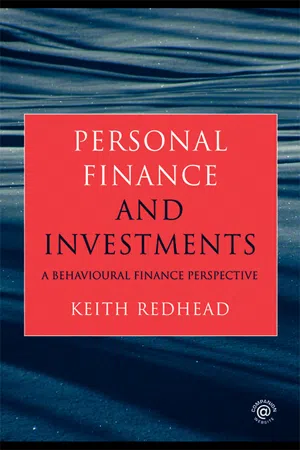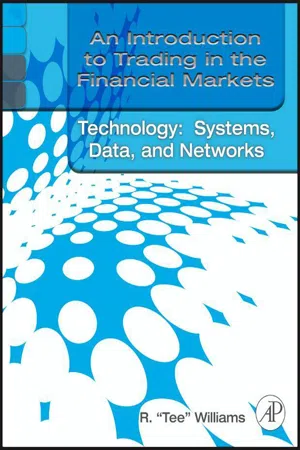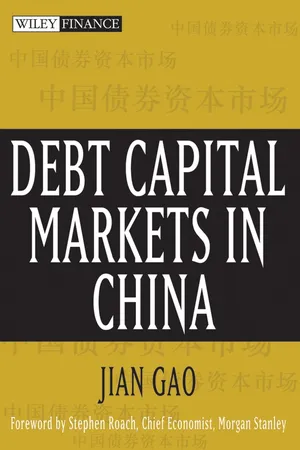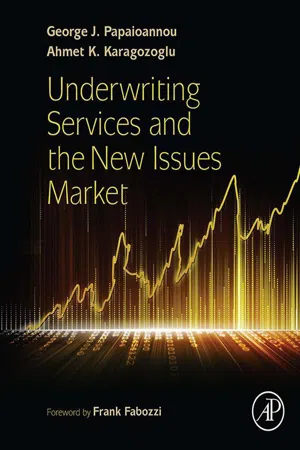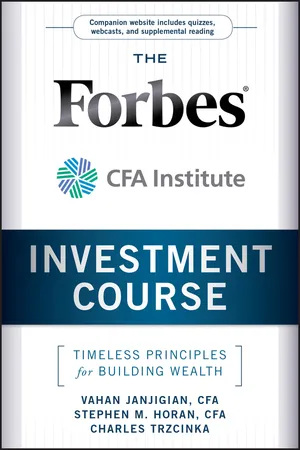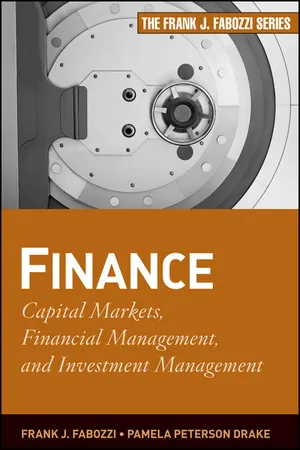Economics
Secondary Market
The secondary market refers to a financial market where existing securities, such as stocks and bonds, are bought and sold by investors, rather than directly from the issuing company. This market provides liquidity for investors to trade their securities, and it also allows for price discovery based on supply and demand dynamics.
Written by Perlego with AI-assistance
Related key terms
11 Key excerpts on "Secondary Market"
- eBook - ePub
Corporate Finance
Theory and Practice
- Pierre Vernimmen, Pascal Quiry, Yann Le Fur(Authors)
- 2022(Publication Date)
- Wiley(Publisher)
Liquidity refers to the ability to convert an instrument into cash quickly and without loss of value. It affords the opportunity to trade a financial instrument at a “listed” price and in large quantities without disrupting the market. An investment is liquid when an investor can buy or sell it in large quantities without causing a change in its market price.The Secondary Market is therefore a zero-sum game between investors, because what one investor buys, another investor sells. In principle, the Secondary Market operates completely independently from the issuer of the securities.A company that issues a bond today knows that a certain amount of funds will remain available in each future year. This knowledge is based on the bond's amortisation schedule. During that time, however, the investors holding the bonds will have changed.Secondary Market transactions do not show up in macroeconomic statistics on capital formation, earning them the scorn of some observers who claim that the Secondary Market does nothing to further economic development, but only bails out the initial investors.We believe this thinking is misguided and reflects great ignorance about the function of Secondary Markets in the economy. Remember that a financial investor is constantly comparing the primary and Secondary Markets. They care little whether a “new” or a “used” security is being bought, so long as they have the same characteristics.The Secondary Market plays the fundamental role of valuing securities.In fact, the quality of a primary market for a security depends greatly on the quality of its Secondary Market. Think about it: who would want to buy a financial security on the primary market, knowing that it will be difficult to sell it on the Secondary Market? - eBook - ePub
Personal Finance and Investments
A Behavioural Finance Perspective
- Keith Redhead(Author)
- 2008(Publication Date)
- Routledge(Publisher)
When stocks and bonds are initially issued they are said to be sold in the primary market. Subsequent to their initial sale they are traded in the Secondary Markets. Primary trading involves buying and selling newly created securities, whereas secondary trading involves shares and bonds that are already in existence.The fact that financial investments can be sold in a Secondary Market renders them more liquid, and hence more attractive. This enhanced liquidity makes investors more willing to buy in the primary market, and causes them to be less demanding in terms of required rates of return.An active Secondary Market improves the operation of the primary market and allows companies to raise money easily and on favourable terms. Secondary-market trading volume far exceeds the level of primary-market dealing.The Secondary Market is the market in which previously issued securities are traded. It is the means by which stocks or bonds bought in the primary market can be converted into cash. The knowledge that assets purchased in the primary market can easily and cheaply be resold in the Secondary Market makes investors more prepared to provide borrowers with funds by buying in the primary market. A successful primary market depends upon an effective Secondary Market.If transaction costs are high in the Secondary Market the proceeds from the sale of securities will be reduced, and the incentive to buy in the primary market would be lower. Also high transaction costs in the Secondary Market might tend to reduce the volume of trading and thereby reduce the ease with which Secondary Market sales can be executed. It follows that high transaction costs in the Secondary Market could reduce that market’s effectiveness in rendering primary market assets liquid. In consequence there would be adverse effects on the level of activity in the primary market and hence on the total level of investment in the economy.Price volatility in the Secondary Market might also be detrimental to the operation of the primary market. High volatility means that buyers in the primary market stand a considerable risk of losing money by having to sell at a lower price in the Secondary Market. This can reduce the motivation to buy in the primary market. Two factors that affect the price volatility of securities in the Secondary Market are the depth and breadth of that market.The depth of the market is based on the likely appearance of new orders stimulated by any movement in price. If a rise in price brings forth numerous sell orders, the price rise will be small. A decline in price that stimulates many buy orders would be a small decline. A deep market would be characterised by the appearance of orders that tend to dampen the extent of any movement in price. Greater depth is thus associated with lower volatility. - eBook - ePub
- (Author)
- 2011(Publication Date)
- Wiley(Publisher)
Chapter 5 The Secondary Market INTRODUCTIONSecondary Markets exist to provide liquidity to investors, enabling them to sell a security after its initial offering. The best-known Secondary Markets are for corporate equities. Because stocks are not redeemable at a specific date, investors need a Secondary Market, such as the New York Stock Exchange, in order to convert their investments to cash. Bondholders expect to receive their principal in cash when their bonds mature, but they still want the option of selling their securities before maturity.A thriving Secondary Market helps to support the primary market for securities. It also serves investors by providing them with an array of different types of securities at different points in time. The ability to buy or sell quickly enables investors to employ a variety of strategies for maximizing return within their risk constraints.THE OVER-THE-COUNTER MARKET Municipal bonds trade in the over-the-counter market, in which transactions are executed among dealers rather than on a central exchange. Exchange versus Over the CounterThe two broad categories of financial markets are the exchange market and the over-the-counter market. Equities can be traded in an exchange market where publicly owned corporations meeting certain minimum capitalization and other requirements are listed. The price of the security is shown after each trade. Certain types of equities, including those of newer, smaller companies, are commonly traded over the counter. An over-the-counter market is one where transactions are executed through dealers, not through a centralized exchange.Municipal bonds are traded in the over-the-counter market, with market participants primarily trading through voice contact. The market has changed in recent years as technology has allowed dealers and customers to interact through electronic trading systems that allow for instantaneous execution of transactions. - eBook - ePub
- R. Tee Williams(Author)
- 2011(Publication Date)
- Academic Press(Publisher)
Part 2
Markets and Marketplaces
Introduction 1. The Primary Market 2. Secondary MarketsPassage contains an image
Introduction
We use the term “markets” to refer to the creation and trading of securities and other traded instruments. Marketplaces are the venues where instruments that have been created and issued to the public are exchanged between buyer and seller. We can categorize markets in several different ways, but there are two basic distinctions among markets for traded instruments (see Figure 2 ). The primary market is the place where securities are created. The Secondary Market is the place where investors and traders trade instruments after they are issued.Figure 2 Market categories create a means to distinguish the markets where securities are created from where they traded after they are issued.We sometimes use the term “marketplace” because, as we saw in the “History” section in Book 1, An Introduction to Trading in the Financial Markets: Market Basics , until relatively recently markets had to be conducted in a physical place. However, beginning in 1976 with the Toronto Stock Exchange, trading has become increasingly automated, and now much—maybe even most—trading occurs in a virtual marketplace.Passage contains an image
1
The Primary Market
The primary market is the place where securities are created. Unlike the Secondary Markets described in Chapter 2 , the primary markets raise money on behalf of companies or governments. Figure 2.1 shows the purpose of the primary market.Figure 2.1 The primary market provides a mechanism for investors and their intermediaries to funnel disposable income to companies and governments that employ those funds to generate economic growth, resulting in income and market appreciation for the investors.There are a number of different processes for raising capital in the primary market. We explore these processes in Part 4 - eBook - ePub
Investments
Principles of Portfolio and Equity Analysis
- Michael McMillan, Jerald E. Pinto, Wendy L. Pirie, Gerhard Van de Venter(Authors)
- 2011(Publication Date)
- Wiley(Publisher)
Secondary Market . In the primary market, funds flow to the issuer of the security from the purchaser. In the Secondary Market, funds flow between traders.Practitioners classify financial markets as money markets or capital markets. Money markets trade debt instruments maturing in one year or less. The most common such instruments are repurchase agreements (defined in Section 3.2.1), negotiable certificates of deposit, government bills, and commercial paper. In contrast, capital markets trade instruments of longer duration, such as bonds and equities, whose values depend on the creditworthiness of the issuers and on payments of interest or dividends that will be made in the future and may be uncertain. Corporations generally finance their operations in the capital markets, but some also finance a portion of their operations by issuing short-term securities, such as commercial paper.Finally, practitioners distinguish between traditional investment markets and alternative investment markets. Traditional investments include all publicly traded debts and equities and shares in pooled investment vehicles that hold publicly traded debts and/or equities. Alternative investments include hedge funds, private equities (including venture capital), commodities, real estate securities and real estate properties, securitized debts, operating leases, machinery, collectibles, and precious gems. Because these investments are often hard to trade and hard to value, they may sometimes trade at substantial deviations from their intrinsic values. The discounts compensate investors for the research that they must do to value these assets and for their inability to easily sell the assets if they need to liquidate a portion of their portfolios. - eBook - ePub
- Jian Gao(Author)
- 2011(Publication Date)
- Wiley(Publisher)
Moreover, from the issuer’s point of view, trading is different from redeeming a bond before maturity. As a matter of fact, in redeeming a bond before maturity, the issuer is obliged to pay the principal. Although the investors receive interest compensation, the funding program for the issuer is terminated prematurely as there is adverse money transfer to the investors. In the case of trading in the Secondary Market, only the bonds change hands; the issuer does not have to pay anything and can use proceeds for the full length of the bond’s term. Therefore, it is in the issuers’ interest to establish a Secondary Market for T-bond trading to secure their funding program.This is contrary to conventional wisdom. Conventionally, the Secondary Market has been perceived as a trading platform for the benefit of investors. The IEEN framework captures the essentials of the relationship between the primary market and the Secondary Market. From the point of view of IEEN, the primary market is a place where investors and other market participants can achieve mutual benefits (i.e., a win-win outcome), through exchanges of their comparative advantages (here mostly information assets). It is secondary exchange, so to speak, the primary market the formal and informal primary exchange. When the Ministry of Finance acts as an issuer, it is both formal and informal as the Ministry can set the rules and regulations (e.g., auction rules) on the formal or external primary exchanges. At the same time, the Ministry, as a market participant, can also enter into contracts (e.g., syndication agreements) with other market participants; this is an informal or internal primary exchange. The primary market is a platform on which issuers and investors achieve their win-win outcome through the exchange. If the exchange can lead a win-win outcome as opposed to a win-lose outcome, as it often happen, the primary exchange will be conducive to the secondary exchange.Passage contains an image CHAPTER 8 Secondary Market: Operational Issues and Role of Participants and Financial Intermediaries OPERATING PROCEDURE FOR SPOT TRANSACTIONS ON THE STOCK EXCHANGE
In developing a sound Secondary Market for treasury bonds, the standardization and establishment of the clearing and settlement system are fundamental. If treasury bond managers are interested in building an effective wholesale market and a framework in which T-bond market experts (i.e., the primary dealers) can play a role to develop a multifunctional derivatives market, it helps to promote a system of automated market transactions. - eBook - ePub
Financial Systems
Principles and Organization
- Edwin H. Neave(Author)
- 2002(Publication Date)
- Routledge(Publisher)
In addition to affecting the rate and kind of economic growth that occurs, the financial system works to value assets, to increase liquidity and to produce information, including information about sources of financing. Securities trading in the primary and Secondary Markets determines the prices of both the securities and the productive assets to which they convey title. Securities valuations are largely based on expectations of the assets’ future earnings, and are based on current information regarding those earnings prospects. As a result, securities valuations can change as new or additional information becomes available. Secondary Market trading increases the liquidity of both financial assets and risk instruments, and increases in the liquidity of outstanding securities can also make new issues easier to sell. Both securities trading and the activities of financial intermediaries produce information, but markets produce information that is publicly disseminated while the information produced by intermediaries is not generally available to other agents. Finally, the presence of financial markets and financial firms means that the cost of searching for an accommodating financier is less than it would otherwise be.2.2 WHO USES THE FINANCIAL SYSTEM?
The principal users of any financial system are consumers, businesses, governments and residents of other countries. Each of these client classes has its own goals, and consequently uses the financial system to achieve particular ends. Understanding the goals of individual client classes is a first step to understanding the kinds of products and services delivered by the firms constituting a typical financial system.2.2.1 Consumers
Individuals or householders borrow or lend as a means of adjusting their expenditures toward their long term income prospects rather than their current incomes. That is, householders enter financial transactions to transfer purchasing power from one point in time. Through using financial transactions, households can arrange their expenditures with greater flexibility than would otherwise be possible, and thus gain greater satisfaction from the ways they spend their incomes. The existence of a well-functioning financial system makes such adjustments possible, and as a result the existence of such a system contributes to enhancing consumer satisfaction. Nearly all householders will enter financial transactions of some type. At any point in time, some householders will be net borrowers (i.e., their borrowing will exceed their lending or investment) while others will be net lenders or investors. - eBook - ePub
Capital Markets and Institutions in Bangladesh
Some Implications of Japanese Experience
- M. Farid Ahmed(Author)
- 2019(Publication Date)
- Routledge(Publisher)
Companies making new issues are inadequately known to the investors with limited information publicly available. Investors in general have skepticism about auditors’ reports.Table-4.5 Public offering of listed sharesIn order to overcome the problems listed above, encouragement should be given for the evolution of a market maker who could hold a block of shares and bonds in one or a few specific scrips and thus impart greater liquidity. Disseminating information through making available to them along with illustrated tables and charts as well as holding meetings to brief them on the business of the companies and their financial position will bring them closer to the investors. This will go a long way in winning their confidence. Moreover, SEC’s role should be as a ‘promoter’ rather than a ‘regulator’ in removing the undue delay in refunding, sending allotment letters, share certificates and the like.Secondary Market
A Secondary Market is a market for purchase and sale of already issued securities. In its pure sense, it refers to the stock exchange. Since securities markets are regulated and the subsequent dealings in securities are supposed to take place on the floor of stock exchange in Bangladesh, this market is expected to concentrate within the stock exchange floor. The stock exchange plays a crucial role in financing corporate sectors. The traditional concept of the stock exchange was that it is a voluntary association of capitalists controlled by themselves, for the concentration of income and wealth in the hands of a few. But this concept of stock exchange is no more tenable and the objectives have undergone a tremendous change toward resource mobilization rather than wealth concentration. Throughout the world the stock exchanges are considered as the unparallel institution for mobilization of savings and capital of the society and also a very sensitive barometer of business activities. It seeks to remove the disadvantages and impediments of the partnership form of business providing a marketplace for the equity issues for public limited companies and other securities. In the absence of a ready market for outstanding shares, new capital will not be encouraged to flow to expedite the growth of industrial sectors. - eBook - ePub
- George J. Papaioannou, Ahmet K. Karagozoglu(Authors)
- 2017(Publication Date)
- Academic Press(Publisher)
2The New Issues Markets
Abstract
This chapter provides an overview of the new issues markets for raising equity and debt in the United States and abroad. The chapter explains the different roles of public and private markets as well as those of primary and Secondary Markets. The chapter also describes the different types of international equity and debt instruments and their markets and presents statistics that show the growth of new issues markets. Finally, the chapter discusses trading mechanics in Secondary Markets and reviews the major Secondary Markets in the United States, Europe, and Asia.Keywords
Primary and Secondary Markets; public and private markets; domestic and international equity and debt markets; new issues market statistics; market structure; Secondary Markets; European markets; Asian marketsThis chapter provides an overview of the new issues markets and the structure and operations of the Secondary Markets that facilitate the trading of securities. The goal is to familiarize the reader with concepts and terms that are used in the subsequent chapters.Primary and Secondary Markets
Corporations and other entities (e.g., state and local authorities) raise capital through the issuing of new financial instruments, like equity and debt, which they sell to investors. This capital raising activity takes place in primary markets. Thus, the function of primary markets is to facilitate the issuance and selling of new securities. Previously issued securities are sold and bought by investors in Secondary Markets. The function of Secondary Markets is twofold: (1) to establish prices for newly issued and traded securities and (2) to enable investors to revise their portfolios and liquidate their holdings. Hence, Secondary Markets are an important complement of primary markets.Public and Private Markets
Public markets refer to the issuance and trading of securities in open markets with no restriction to the number or type of investors. To ensure fair practices and informed trading, public markets require extensive disclosure of information and impose penalties for violations. Firms that issue or list securities for public trading must register with a capital markets authority [e.g., the Securities and Exchange Commission (SEC) in the United States] and comply with periodic information disclosure requirements. The advantages of public markets include continuous pricing of securities, ease of buying and selling, and the presence of large pools of investors. The disadvantages include costly information disclosure, compliance with various rules and procedures, and lack of flexibility in the design of securities. - eBook - ePub
The Forbes / CFA Institute Investment Course
Timeless Principles for Building Wealth
- Vahan Janjigian, Stephen M. Horan, Charles Trzcinka(Authors)
- 2011(Publication Date)
- Wiley(Publisher)
internalize the orders they receive by filling them from inventory instead of sending them to the exchange for execution. Internalization can also involve broker-dealers who are not NYSE members and who can execute their customers’ orders in any NYSE-listed stock internally. Furthermore, NASDAQ stocks can be internalized when customers’ orders are filled by a brokerage firm in its dual role as a broker-dealer instead of sending the trades to other dealers. Thus internalization can be thought of as routing orders to oneself because the orders never leave the customer’s brokerage firm for execution.Chapter TakeawaysThe securities markets facilitate trading by intermediating between buyers and sellers. The markets allow investors to purchase a wide range of securities, and they give companies a practical means of raising money.The primary market is where corporations raise money, usually with the assistance of an investment bank. The proceeds from trades on the primary market go directly to the company. After an initial public offering (IPO) in the primary market, the shares begin trading among investors in the Secondary Market. Proceeds of a sale in the Secondary Market go to the seller of the securities.Secondary Market trades take place on securities exchanges (such as the New York Stock Exchange) and through networks of dealers linked by computer systems, also known as the over-the-counter (OTC) market. The most widely recognized OTC market is the NASDAQ. The NASDAQ’s main competitors are known as electronic communication networks (ECNs), which are often used by online brokers to fill customer orders. Instinet is the oldest major ECN.Computerization has facilitated the process of buying and selling stocks. In fact, the global trend is toward more electronic trading. Electronic systems are more efficient than trading floor exchanges. They leave a precise trail of transactions, making it easier to detect and prevent fraudulent activities. However, because they don’t rely on human specialists, they may facilitate volatility caused by high-frequency, algorithmic trades initiated by computerized programs. - eBook - ePub
Finance
Capital Markets, Financial Management, and Investment Management
- Frank J. Fabozzi, Pamela Peterson Drake(Authors)
- 2009(Publication Date)
- Wiley(Publisher)
Rule 144A, which was approved by the SEC in 1990, eliminates the two-year holding period under certain circumstances. Specifically, Rule 144A permits large institutions—defined as one holding at least $100 million of the security—to trade the security purchased via in a private placement among themselves without having to register these securities with the SEC. As a result, the private placement market is now classified into two category: Rule 144A offerings and non-Rule 144A (commonly referred to as traditional private placements). Secondary Market A Secondary Market is one in which financial instruments are resold among investors. No new capital is raised and the issuer of the security does not benefit directly from the sale. Trading takes place among investors. Investors who buy and sell securities on the Secondary Markets may obtain the services of stock brokers, individuals who buy or sell securities for their clients. Market Structure: Price Determination Mechanisms Secondary Markets are categorized based on the way in which they are traded, referred to as market structure. There are two overall market structures for trading financial instruments: order driven and quote driven. Market structure is means the mechanism by which buyers and sellers interact to determine price and quantity. In an order-driven market structure, buyers and seller orders submit their bids through their broker who relays these bids to a centralized location, where bids are matched and the transaction is executed An order-driven market is also referred to as an auction market. In a quote-driven market structure, intermediaries (market makers or dealers) quote the prices at which the public participants trade. Market makers provide a bid quote (to buy) and an offer quote (to sell) and realize revenues from the spread between these two quotes. Thus, market makers derive a profit from the spread and the turnover of their stocks
Index pages curate the most relevant extracts from our library of academic textbooks. They’ve been created using an in-house natural language model (NLM), each adding context and meaning to key research topics.

